




Yes, its true; before we even have a chance to get our heads around the show, the set is already under construction in Virgil at the Shaw shop. This is, for better or worse, the nature of repertory theatre and theatre in general. Sets are built, sometimes far ahead of time, giving little or no room for changes, alterations, conceptual shifts, and generally anything new and interesting or innovative that might come out of the rehearsal process. As a result, sets are designed to work in as universal a way as they can
We know certain things that the script tells us, for instance there are two locations; an apartment in London, and a house in the country. We know that certain things happen in these locations. What we cant know is how these things will evolve in the rehearsal process, so we must make a calculated guess. But if, for instance, a door is not properly placed or a window, nothing can be done to alter them accept to direct the actors around them. This can sometimes guide the process and sometimes hinder it
Only in rare instances do the builders work hand in hand with the performers to develop the environment. In our original production of The Overcoat, the Vancouver Playhouse props department worked at supplying the production with what it needed as the need became apparent. But even in that instance, the set had to be realized before the actors even entered the room, which meant inventing a design that worked for a show that hadnt even been created
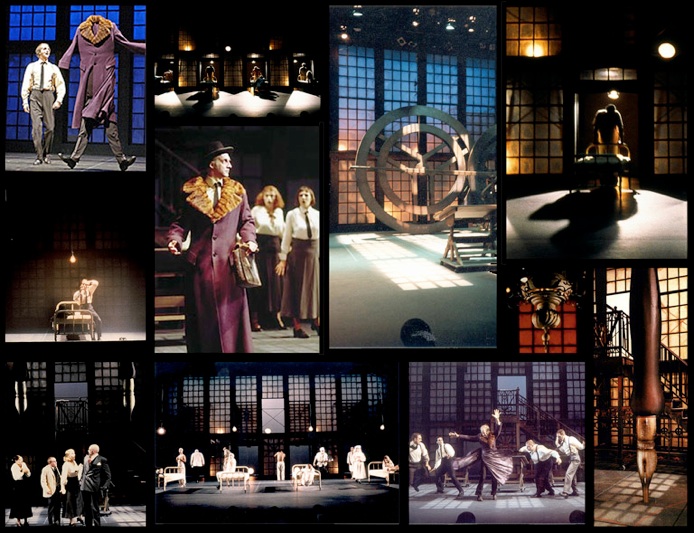

The Overocoat as conceived by Morris Panych and Wendy Gorling was an exercise is artistic collaboration. From its inception, the project required the commitment and faith of all parties since there was no blueprint, and the entire show was built on an idea whose outcome was very much in question. All the same, builders, designers, actors, had to show up with their best game and try to follow where the process was headed. This kind of exercise is nearly impossible in theatre production today where so many elements are forced to come together in structural cohesion, where budgets dictate form, where time dictates outcome, and where expectations are more pragmatic than artistic. Art can survive in this environment, but designers, directors, performers, all need to understand how to work within these practical restrictions

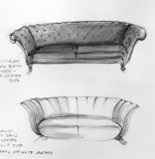
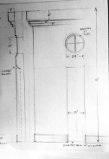
Above, Ken does drawings for set sections and even furniture on his ipad, later CAD drawings are done, left, so the dimensions are correct for the builders. The sofas pictured above may be built or found, depending on whats available. Sometimes as existing piece of furniture can be remade and sometimes its just easier and cheaper to build it from the ground up
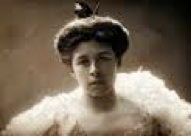
Once again, as with our production of The Constant Wife in Vancouver we are borrowing the idea of the white room from Maughams wife, Syrie Maugham, and interior decorator who first conceived the idea
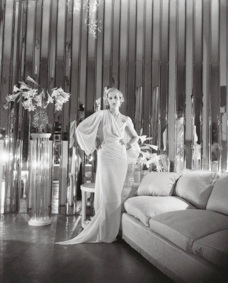
By emulating the elegant style of the period we are attempting to convey the kind of money that was required to maintain a certain lifestyle to which certain British gentry had become accustomed but could no longer afford. And so they turned to any number of means to accomplish this including using their titles to attract wealthy American women, who, in turn, lacked the cache of the British landed gentry but found they could achieve it through marriage. Maugham called into question who was better, by asking who was worse; the have or the have not.
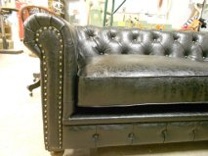
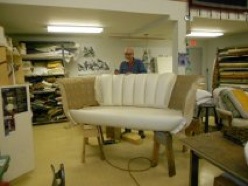
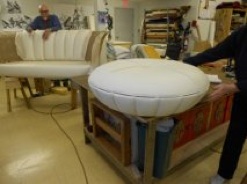
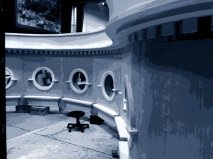

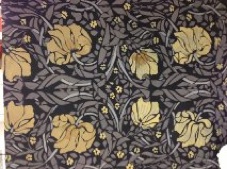
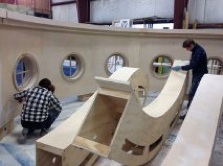
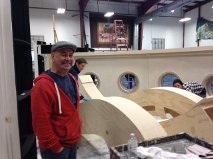

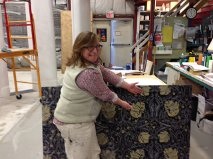
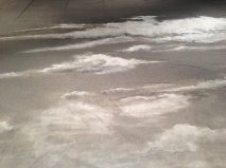

An afternoon visit to the prop and scene shops finds Jennifer upholstering sofas and Gwyneth checking paint samples for wallpaper

William Morris inspired wallpaper completes the look for the country house. We were looking for a distressed look, in order to emphasize the idea of social and moral decay
Painting in the shop continues apace, with finishing touches on doors and windows. Right., we are using the same sky painting as we used for Design for Living
As Ken oversees work in the shop, the builders continue until they have a finished product, below; the country house, seven doors into the garden





Left, Craig Putt, tech director for the George Theatre, tries out the doors of the set, once they are assembled onstage. Right, Ken makes a visit to the prop shop to find period folding chairs for the poker game in act two, A card game is quickly arranged at the end of the act, so Morris asked for folding chairs
Costume fittings for Julia, left, and Catherine McGregor, seen in three different looks for three different acts. Charlotte Dean spends much of her time driving up and down the QEW looking for just the right material for these dresses, which must be elegant, authentic, and last for an entire season. A lot of wear and tear must be considered with dresses that are worn far more than their real counterparts would ever be.
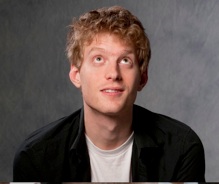
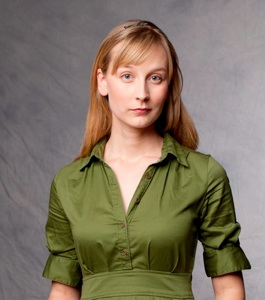
Wade Bogert-OBrien plays the young American, Fleming Harvey. We last worked with Wade in Doctors Dilemma
Below, Julia Course, plays Bessie Saunders, the younger sister of Lady Grayson








Above, the set unfolds, literally. In order for the sets to be stored backstage, in such a confined area, clever ideas are needed. Tech director Craig Putt and his team have devised an ingenious hinge method of folding each of our two sets into itself. The the set is wheel out, on air casters, and swung into position, where it becomes the finished wall that Ken MacDonald proudly displays above, right.
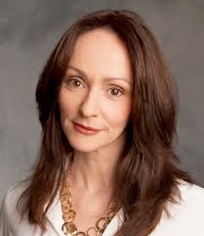

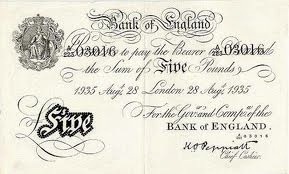
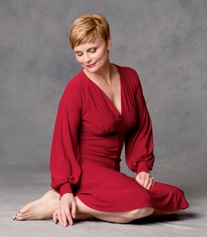
Work proceeds in the Shaw costume department. Period costumes are both constructed from scratch or rebuilt from existing stock.
Below, Claire Julien is fitted for act one costume, which is colour matched with the all white set. Charlotte, our costume designer once again, is pictured in the lower right hand, pinning her creation. Below, centre, Claire Julien, who plays Lady (Pearl) Grayston, and
right, Catherine McGregor, the Princess de la Cercola.
Money is discussed a great deal in the play. The British pound of the period had the purchasing power of 42 pounds today, which means the 5 pound note, pictured, left, would be worth over two hundred pounds in todays money, and is the poker limit in a card game played at the end of act two.

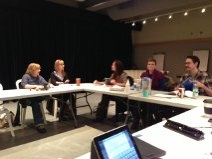
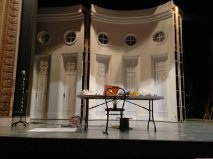
Work at the table is called table work. Actors discuss the story, the situation, their characters, the plot lines, until the director cant take it anymore, usually about a day and a half in our case.
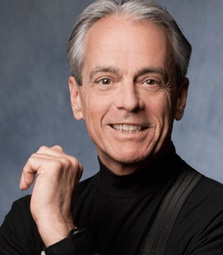
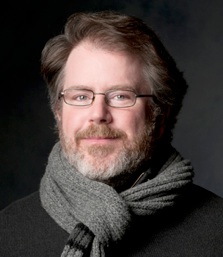
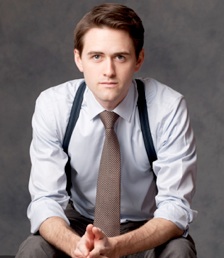
What show about designing women would be complete without men? Pictured above, left, Lorne Kennedy who plays Arthur Fenwick, centre, Ben Sanders who plays Lord Harry Bleane, and right Neil Barclay, who plays Virginia, Thornton Clay.

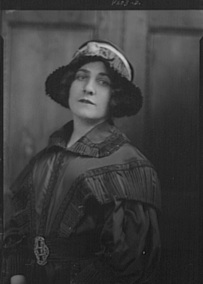
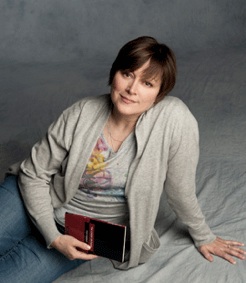
Left, and far right, the eighth and last Duchess Richelieu, Elenore Douglas Wise, was born in Baltimore and could quite possibly have been the inspiration for our Duchesse De Surennes, played by Laurie Paton, who last worked with us in Hotel Peccadillo





James Pendarves poses with Dar, Cheryls assistant in wardrobe, right. James plays the dancing master, Earnest, who shows up in Act 3 to save the day with a tango. Left, Julia tries on her Act 1 and Act 3 frocks in the fitting room, while below, Ben Sanders rocks the British Lord look with a tan suit for Act 1. Ben plays the lovelorn Harry Bleane. Below, right, James Pendarves
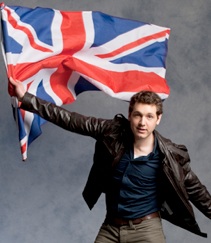
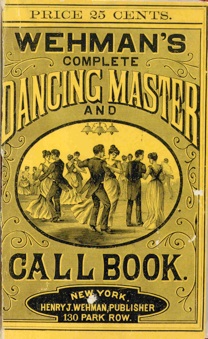
Early in the last century it was all the rage for women of means to hire dancing masters to attend them at balls and parties and show them the latest dances; perhaps an early version of dancing with the stars? One of the new steps was the two step; another was the tango.
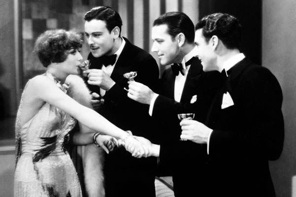

In only a very short period prior to WW1, over a hundred American heiresses had married British nobility, raising Anglomania to new heights, as described in such books as this, left, by Gail MacColl and Carol McD Wallace, and shown in TV shows like Downton Abbey
English nobles were running out of money and needed a fresh supply of cash to keep them in the manner to which they had become accustomed. Above, left, Ben Sanders dresses up to propose to an heiress, and above, Joan Crawford gets pawed about by gigolos








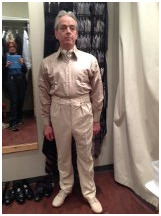
As the set comes together onstage, Lorne Kennedy, right, is fitted for three acts of Arthur Fenwicks costumes; a white suit to match the white set, above, and some evening wear for act two; in act three a casual, yet somehow severe, look to greet a new day. Pictured below, at his early morning fitting with Shaw tailor Phil Atfield is newcomer to Shaw, Charlie Gallant. A dapper afternoon tea look for London, a smart tuxedo for an evening in the country and regular day clothes in act three for his departure, complete Tony Paxtons ensemble. Although some suits are tailored, many more are pulled from company stock and refitted, saving many thousands of dollars. Fashion is fashion, but once its past, its stock
Designer day at the theatre is an opportunity for the designer to see the entire look of the show pulled together. With his team of props and set builders and painters, Ken works at putting together the pieces. It is also a valuable opportunity for Craig Putt and his team of stage hands and technicians to determine the most efficient way of turning one set into another in only fifteen minutes. Many tricks are employed backstage to accommodate the storage of sets for three shows.
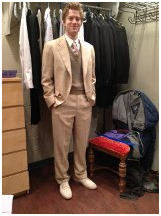

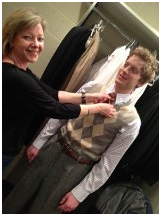
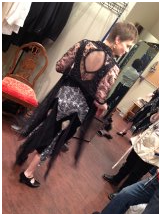

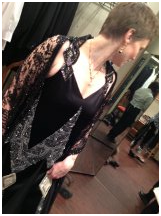


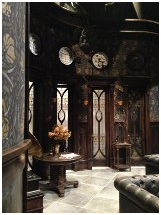
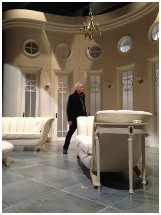
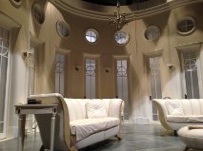
Wade with
Christine in wardrobe, trying on clothes for acts one and three, for young Fleming Harvey, Harvard graduated American New Yorker, who surprises his fiancee with a visit to London, only to discover they are no longer engaged.
Lights are added to the Act 2 and 3 set, and below, Morris walks Act 1 to check his staging. A taped out floor in rehearsal can be very different than the real thing
As with the set design, the difference between theory and practice with costumes can be considerable, but as much as possible the designers try to represent what the audience will see on stage
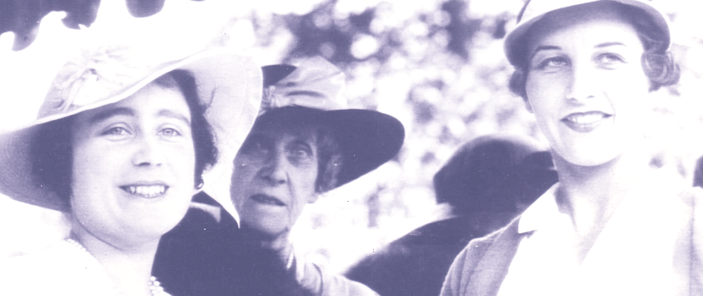
Workbook: Our Betters
Ideas and Images for our Shaw Festival production of Our Betters
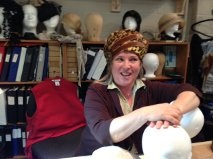
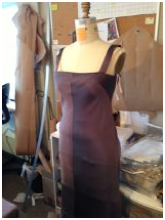
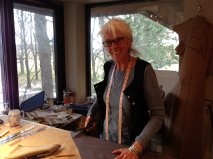
Hats being finished in the costume department, this one, below, fashioned by Margie Berggren, milliner for the Festival, a leopard patterned hat for the Duchess de Surennes
Charlotte takes Ken and Morris on a quick tour of the costume shop at the Festival to see how the show is progressing. Wardrobe, at this time of year, is a crazy beehive of activity. Although Our Betters is the first show onstage, there are eleven others being built. Above, centre, Jill Braybrook cuts material for an act three dress for Claire Julien; one of three elegant pieces she wears in the play; a dress so sheer it requires an underdressing, above left.
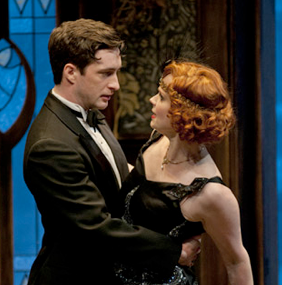
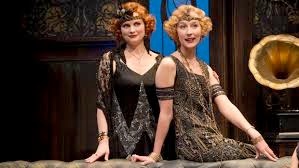
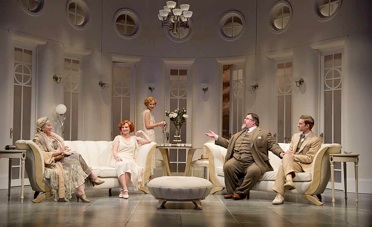

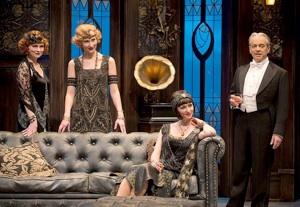
Production stills from Our Betters. Upper left, Neil Barclay entertains the other guests in Act One. Upper right, Claire and Charlie get into a bit of an embrace. Centre left, Claire and Julia pose in Act Two. Lower left, Lorne, Catherine, Julia and Claire on the glamourous Act Two set, dressed for a smart evening of gossip. Lower right, Julia and Wade meet for the first time in months surrounded by her new found elegance in London.